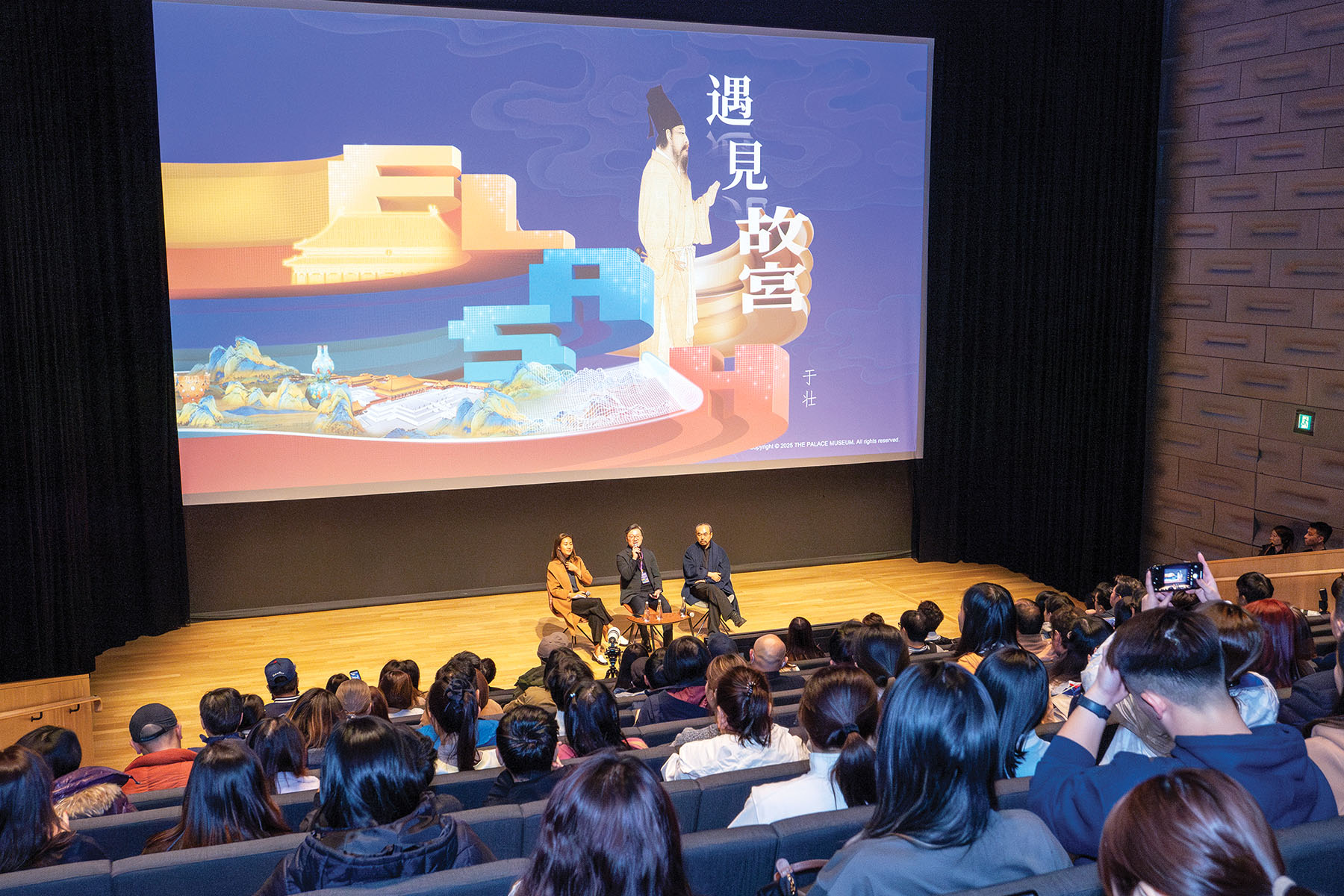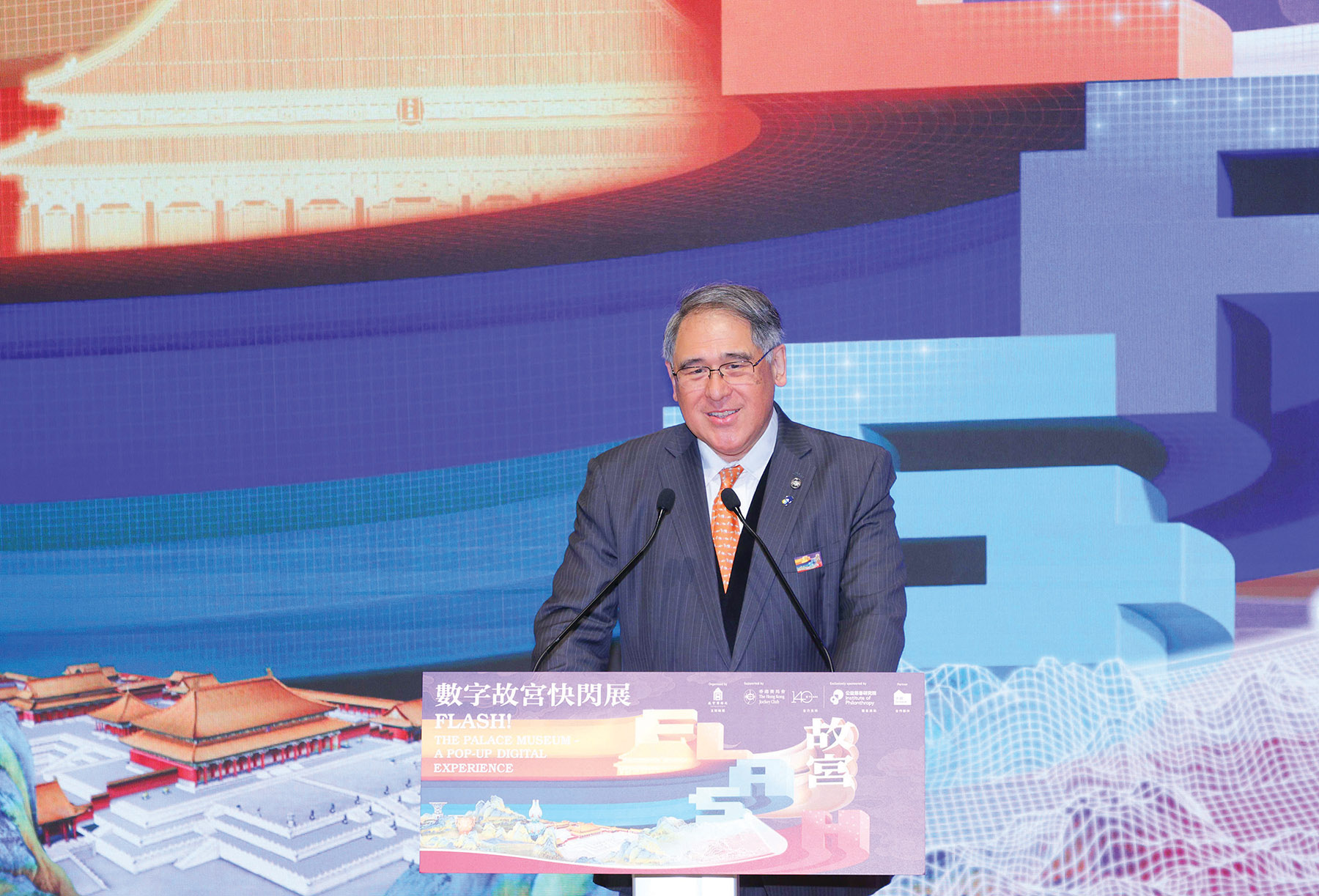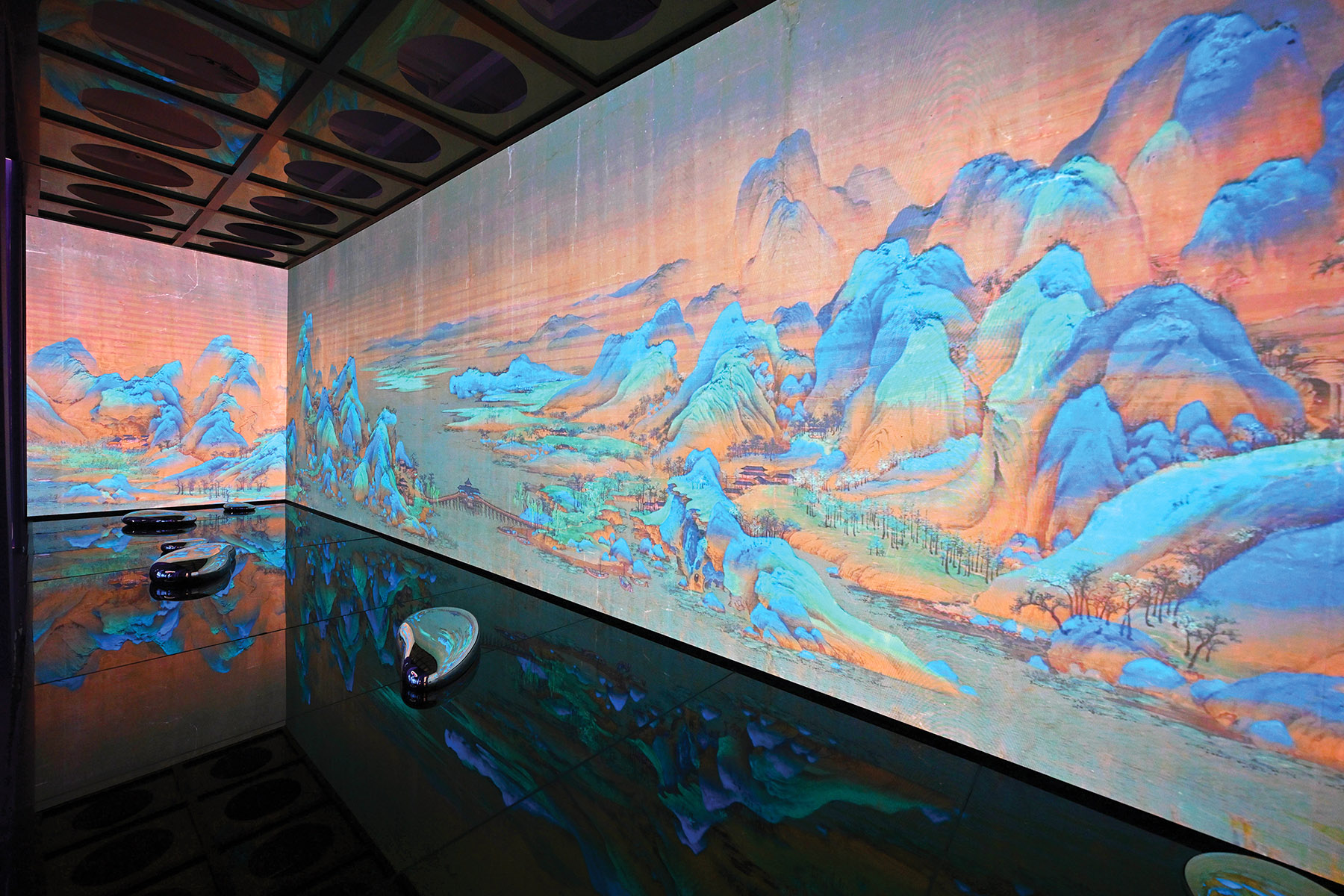
Representatives from Beijing’s Palace Museum and Hong Kong experts got together recently in two Tai Kwun Conversations to share insights on how arts tech can bring a fresh perspective to traditional culture. They also explained how cultural heritage conservation strategies could be developed with reference to Tai Kwun, as the Palace Museum staged its first pop-up digital exhibition in Hong Kong.
Supported by The Hong Kong Jockey Club, exclusively sponsored by the Institute of Philanthropy (IoP), organized by the Palace Museum and in partnership with Tai Kwun, the exhibition FLASH! The Palace Museum — A Pop-Up Digital Experience was held at Tai Kwun from Jan 17 through 31.
The exhibition stemmed from a memorandum of cooperation — “Promotion of Chinese Culture and Arts Tech Talent Development in the Mainland and Hong Kong” — the Club and IoP signed with the Palace Museum last May.
Utilizing cutting-edge arts tech — a convergence of art and technology — the exhibition recreated the former Forbidden City’s architecture and interpreted its unique artistic charm. Visitors engaged in a variety of interactive experiences to explore the intriguing history and exquisite artistry reflected in the museum’s collections.

At an opening ceremony for the exhibition, Lester Huang, Steward of The Hong Kong Jockey Club and Chairman of IoP, said the Club and IoP are committed to promoting arts and cultural heritage. He mentioned that the exhibition was a key activity of the collaboration agreement between the Club, IoP and Beijing’s Palace Museum.
Arts tech meets tradition
During a Tai Kwun Conversations session on Jan 17 with over 100 attendees, Yu Zhuang, the Palace Museum’s Deputy Head of Digital & Information, shared the exhibition’s curatorial concepts and elaborated on how digital technology was used to enhance the presentation of the old imperial palace.
In showcasing the 600-year-old World Heritage Site, Yu said the exhibition blended “the tangible physical space with its intangible soul” to offer immersive experiences.

Among the exhibits was a digitized version of the scroll painting A Thousand Li of Rivers and Mountains by Wang Ximeng (1096–1119), which dates back to the late Northern Song dynasty.
Yu said that due to the actual painting’s small size, viewers may not be able to fully appreciate its magnificence. However, through digital processing, they could “step into” the boundless scroll and explore scenarios of life in bygone times.
“Technology can bring traditional culture’s accessibility to a new level by dismantling the barriers created by the uniqueness of the artifacts,” Yu said, adding that it enhances the audience’s experience and helps “convey the wisdom of previous generations”.
Chengqiangong conservation
IoP, established by The Hong Kong Jockey Club and its Charities Trust, pledged a donation of HK$440 million to promote Chinese culture in the Hong Kong Special Administrative Region, the Chinese mainland and globally. This included support for talent development initiatives in the arts tech and cultural sectors. The donation falls under a memorandum of cooperation signed by the Club and the Palace Museum. This collaboration is an important contribution to the development of Hong Kong as an East-meets-West center for international cultural exchange as outlined in the national 14th Five-Year Plan (2021–25).
IoP and The Hong Kong Jockey Club also committed to supporting the restoration and conservation of Chengqiangong, one of the six Eastern Courts of the Forbidden City, and transforming it into “The Palace Museum Hong Kong Cultural Exchange Hub”.

Built in 1420, Chengqiangong was a residence for concubines during the Ming and Qing dynasties (1368–1911). It is one of the few remaining halls with its original Qing-era soft ceiling intact.
Zhao Peng, Deputy Head of Architectural Heritage of the Palace Museum, said the preservation of its soft ceiling defines Chengqiangong’s significant heritage value.
“The soft ceiling is adorned with intricate luanniao (fabulous bird)-and-phoenix paintings … This could be the sole example of this combination in China, and perhaps even the world,” Zhao explained to over 100 people gathered at another Tai Kwun Conversations session on Jan 19.
He revealed that the restoration team has been conducting mapping exercises at Chengqiangong following several restoration tests last year. The first draft of Chengqiangong’s Conservation Management Plan is expected to be completed within the year.
Zhao praised Tai Kwun’s conservation plan, saying its restoration outcomes inspired him greatly. He hoped Chengqiangong’s conservation plan could similarly become a benchmark and inspire the conservation of other heritage sites.
The Club has come a long way since its founding as a racing and members club. Over the past 140 years, its partnership with the community has thrived thanks to a unique integrated business model through which racing and wagering generate tax contributions, charity support and employment opportunities for Hong Kong. The Club — under the banner “With You. Then. Now. Always.” — has organized a series of celebratory initiatives to mark this milestone and recognize Hong Kong people’s contribution to its mission to act continuously for the betterment of society.
This section is sponsored by HKJC


